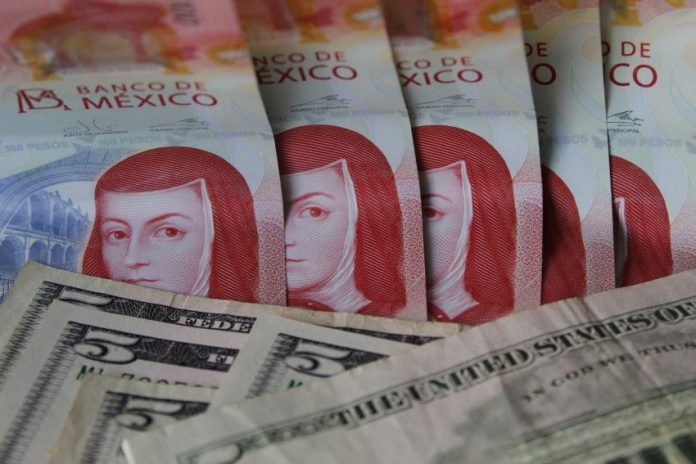After closing Wednesday at 16.54 to the US dollar, the peso gained more steam overnight and was trading at 16.50 early Thursday morning — its strongest rate since Dec. 2, 2015.
However, things reversed course over the rest of the day Thursday, leaving one greenback worth 16.58 pesos as of 5:30 p.m. Mexico City time, a 0.24% decrease for the peso from Wednesday’s closing but very close to where it opened the week (16.61).
Nuevo mínimo del año en mínimo de 16.5057 pesos por dólar, no visto desde el 2 de diciembre del 2015 pic.twitter.com/BRIQKboomz
— Gabriela Siller Pagaza (@GabySillerP) April 4, 2024
For the sake of comparison, the exchange rate in April 2020 reached 25.45 pesos to the US dollar.
Meanwhile, according to forecasts for 2024 from the Bank of Mexico (Banxico) released Thursday, the central bank expects the dollar to trade in 2024 between 17.68 and 18.67 pesos to the US dollar. That may be conservative given that the peso surpassed 2023 forecasts, breaking the floor of 17 pesos per US dollar.
Banxico expects inflation to continue its downward trend, which began in 2022, after a historical 8.7% high in September. Banxico predicts 4.02% inflation in 2024, still shy of the bank governors’ ideal of 3%.
Banxico also announced its growth forecast for Gross Domestic Product (GDP): 2.29% in 2024.
Mexico’s economy witnessed a slight drop in consumer confidence, from 47.4 in February to 47.3 in March, according to the national statistics agency (INEGI).
Data shows the economy still growing but that it began to lose some momentum as March’s PMI decelerated amid Banxico’s high interest rates, despite a reduction from 11.25% to 11% last month. PMI, or Purchasing Managers’ Index, is a statistic that surveys companies monthly to gauge economic health.
In the U.S., Federal Reserve Chair Jerome Powell said regarding interest rates Wednesday, “We do not expect that it will be appropriate to lower our policy rate until we have greater confidence that inflation is moving sustainably down toward 2%.”
However, Powell did say that the Fed expects to reduce its rate three times in 2024.
Meanwhile, Mexico’s remittances are still a driver of the peso’s strength. While Mexico received US $36.06 billion in foreign direct investment (FDI) in 2023, remittances for last year amounted to $63.31 billion, a ratio some experts told the publication EL CEO is problematic.
“We must not fail to point out that this is a gap in Mexico’s productive capacity and a lack of opportunities,” El CEO wrote.
A Reuters poll published on April 4 said that most economists foresee the peso weakening 4.7% to 17.38 pesos to the US dollar in 12 months.
